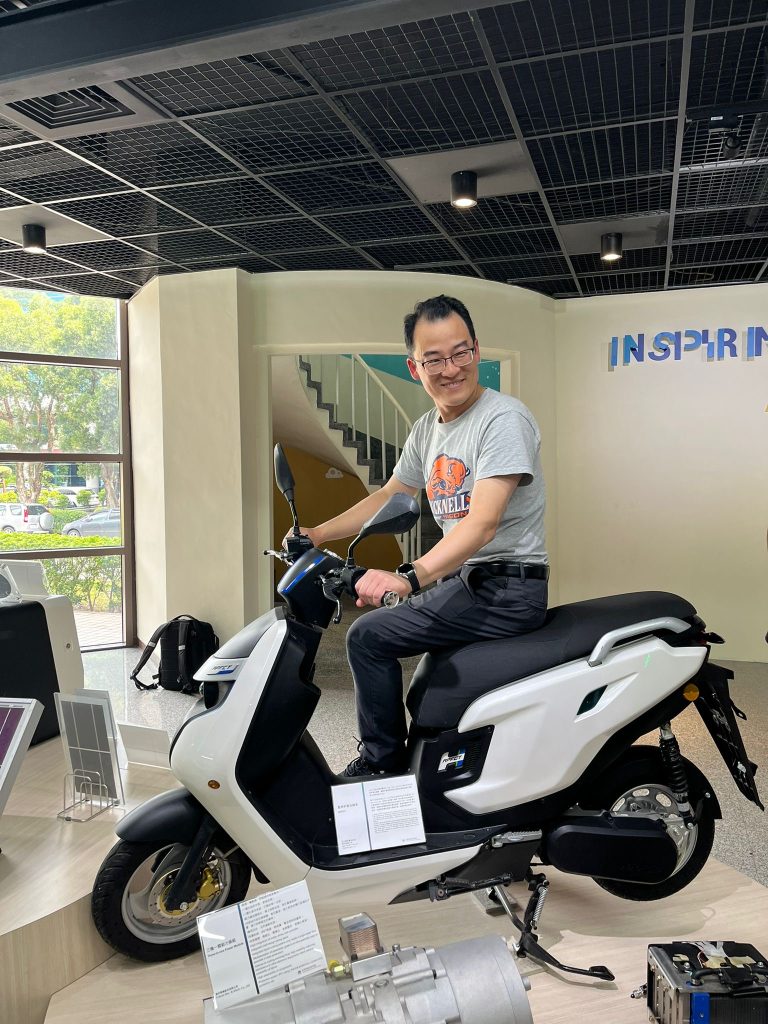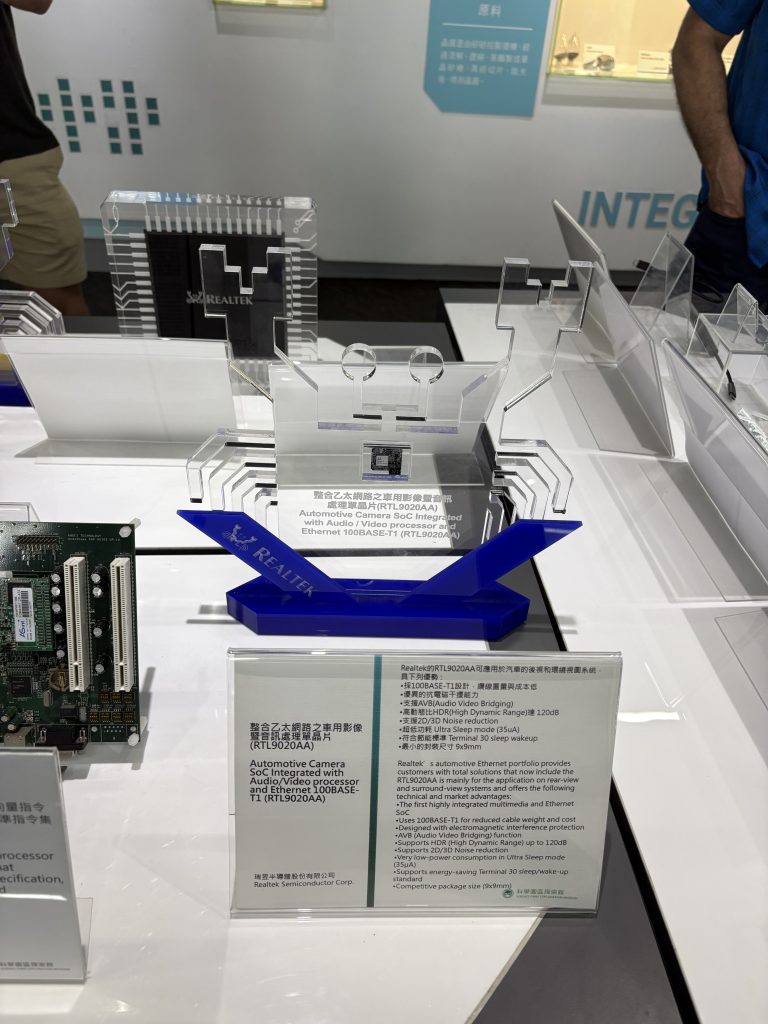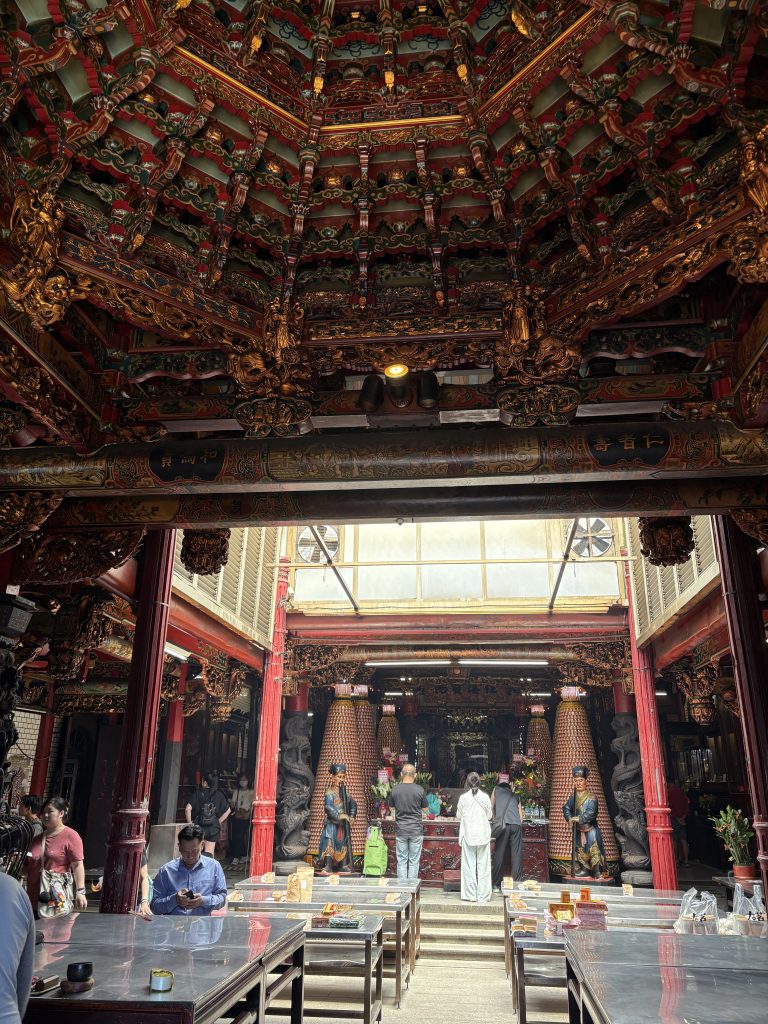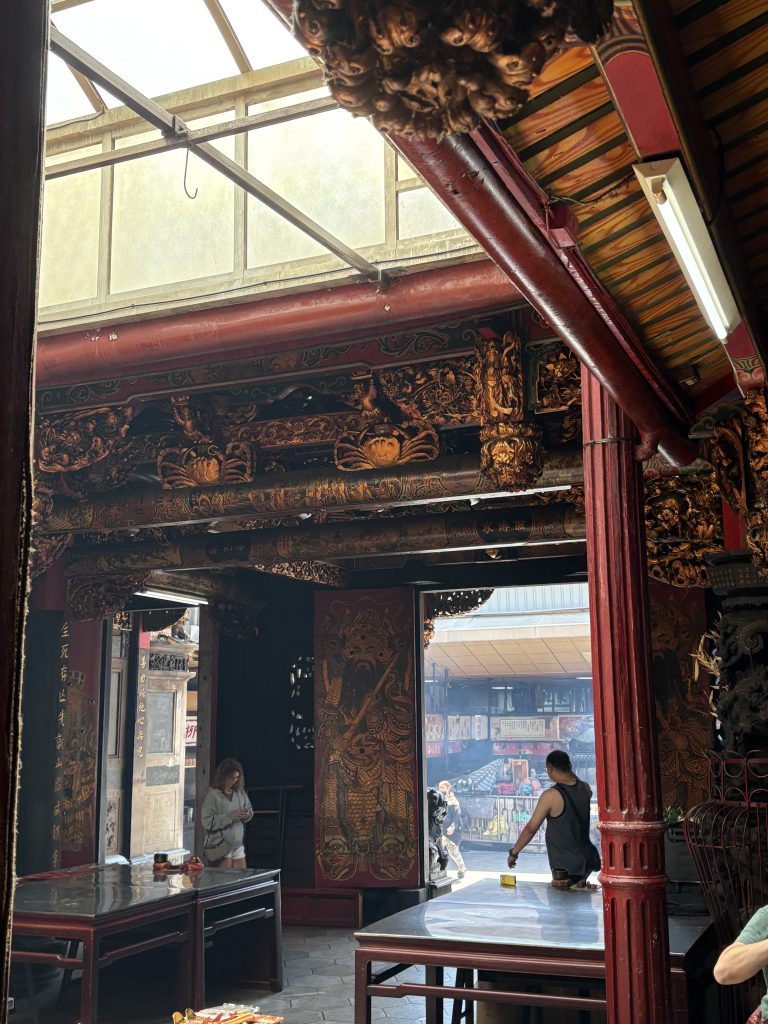Our day on Tuesday began with a train ride from Taipei to Hsinchu. Once we arrived in Hsinchu, we went to HSP, the Hsinchu Science Park, which is the equivalent to America’s Silicon Valley. We first went on a guided tour, where we learned about some of the most unique inventions that have come out of HSP.
One of the pieces of technology I found most interesting was the motorcycle that ran on hydrogen gas. I think this is a great alternative to methane gas, which releases harmful greenhouse gases to the environment and heavily contributes to global warming. However, a drawback of this technology is that the model we viewed is only able to drive 80 kilometers at a time, which is not very reliable or sustainable for most people. Another drawback of this technology is that in Taiwan, it is only a model and not actually produced at scale for consumers. However, Japan uses a similar technology on their shuttle buses, which demonstrates a promising outlook to produce this technology on a wider scale in the future.
Another thing I found really interesting about today’s travels was when Professor Chen pointed out that the automotive camera we looked at in the HSP museum was shaped like a crab. At first glance, this seems to not be of any significance; however, Professor Chen told us that crabs are symbolic of dominance because of their aggressive nature. Similarly, the manufacturer of the cameras wanted to assert dominance in their field, so they used the crab as an outline for their camera.
Later, when we visited City God Temple, I noticed there were two crabs near the entranceway. I found this interesting because of what we previously learned about the meaning behind crabs, and am curious what in particular the temple wants to be regarded as “dominant.”
In Hsinchu, I found there to be much less connection between religion and business. For example, in HSP, there weren’t any temples within the park. There is one temple in Hsinchu, the City God Temple, but it was located a significant distance away from the Science Park. The temple was built over 100 years ago, while the Science Park was built only 45 years ago, and it seems as though it was intentionally placed at a distance from the temple. More modern economic development seems to be intentionally separated from more traditional cultural beliefs, which emphasizes the divide among generations and an overall more secular population among younger generations.



